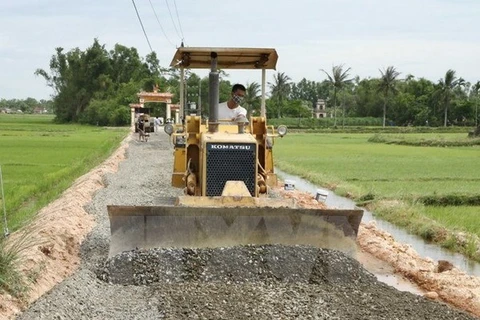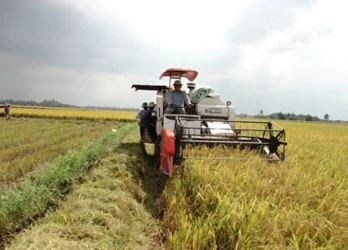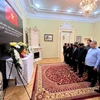An Giang (VNA) – The Mekong Delta province of An Giang is striving for over 50 percent of its communes (or 60 out of 119 communes) to meet all 19 criteria required for being recognised as new-style rural areas by 2020.
Speaking at a conference in the locality to review outcomes of the national target programme on building new-style rural areas over the last five years, Director of the provincial Department of Agriculture and Rural Development Tran Anh Thu said the locality mobilised more than 6.2 trillion VND from various sources for the work.
The sources helped An Giang build and upgrade transport infrastructure and irrigation work, and promote rural economic development models, he noted.
An Giang has so far had 13 communes recognised as new-style rural areas, accounting for 10.92 percent of total communes in the province, Thu said.
He added that the movement contributes to promoting socio-economic development in ethnic minority and border areas.
The rates of poor and near-poor households have dropped rapidly, to less than 8.45 percent, and 5.15 percent respectively.
At the conference, the Steering Committee proposed a series of measures to realise the goals set, including promoting communication work, and the restructuring of agriculture with a focus on the application of hi-technologies in the field.
Chairman of the provincial People’s Committee Vuong Binh Thanh praised efforts made by authorities at all levels, relevant agencies and locals in forming new-style rural areas, calling on them to continue with the great work.
On the occasion, 44 organisations and 132 individuals from the locality were presented certificates of merit for their contributions to the movement.
The national target programme on new-style rural areas, initiated by the Government in 2010, sets 19 criteria on socio-economic development, politics and defence, aiming to boost the development of rural regions.
The list of criteria includes the development of infrastructure, the improvement of production capacity, environmental protection and the promotion of cultural values.-VNA
























